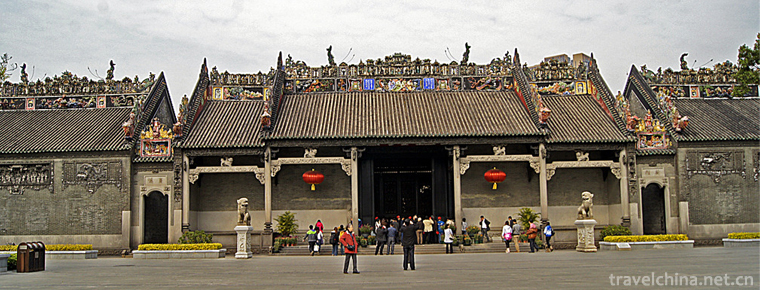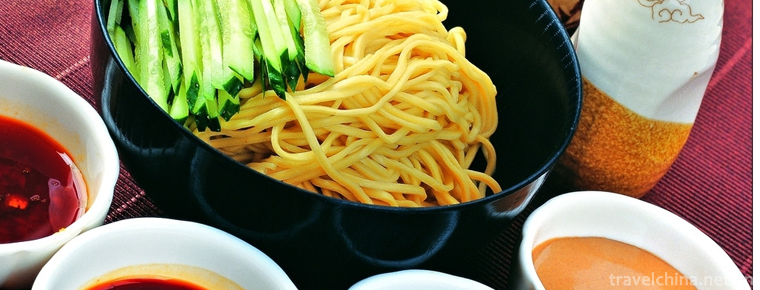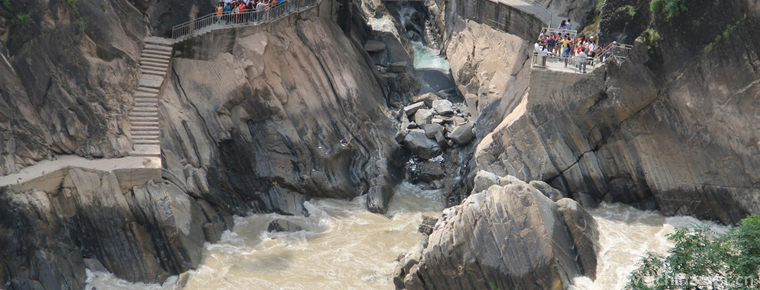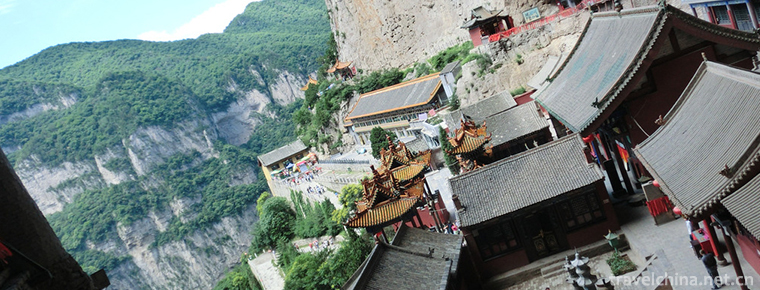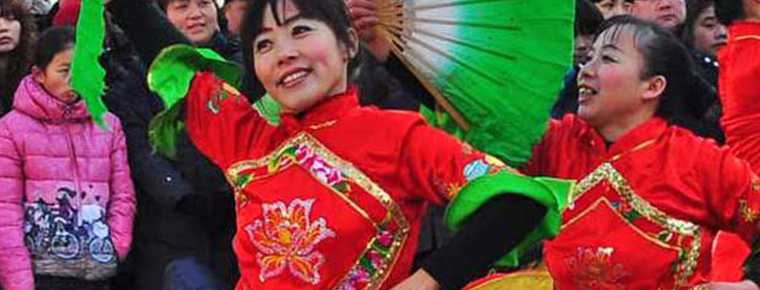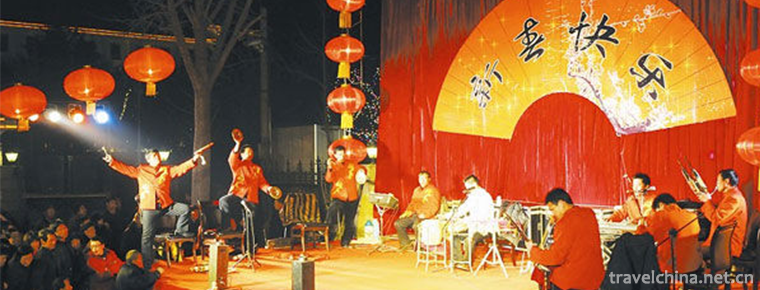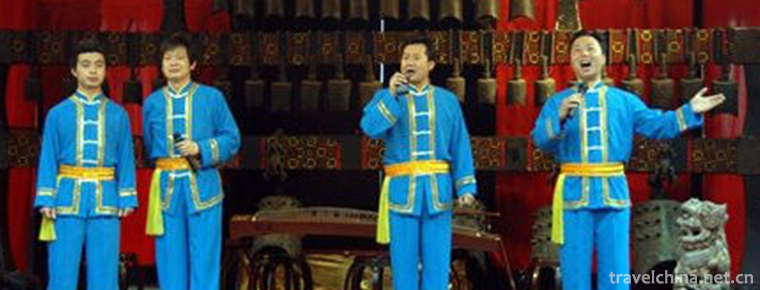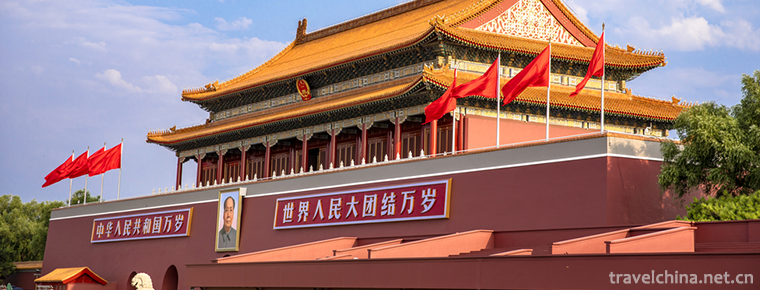North Road Bangzi
North Road Bangzi
Bangzi, also known as Shanglu Opera, is a local traditional drama in Datong, Shuozhou, Xinzhou and parts of Inner Mongolia and Hebei in northern Shanxi Province. It is one of the national intangible cultural heritage.
Beilu Bangzi is one of the four Bangzi in Shanxi Province. In the early Qing Dynasty, Bangzi of Puzhou went north and gradually formed Bangzi of North Road after taking root in Xinzhou. Its aria, melody and pronunciation are similar to those of Bangzi in Puzhou, but the general tone is higher. Afterwards, he was influenced by Hebei Bangzi. He paid special attention to singing and created many flower tunes.
On May 20, 2006, Bangzi Beilu was approved by the State Council of the People's Republic of China to be included in the first batch of national intangible cultural heritage list, the heritage number: IV-20.
historical origin
Beilu Bangzi, together with Bangzi of Puzhou, Bangzi of Zhonglu and Bangzi of Shangdang, is called the "Four Bangzi of Shanxi". From the Qing Dynasty to the Republic of China, outsiders were generally referred to as "Shanxi Bangzi" or "Daizhou Bangzi", or collectively referred to as "Western Opera", "Western Opera", "Western Opera" or "Shanshan Bangzi" with Qin Opera and Pu Opera; locals were only referred to as "Grand Opera" or "Bangzi Opera", occasionally called "Yangge", such as Huailai, Zhuolu in Hebei Province. After liberation, it was named "Bangzi on North Road" and now it is also called "Yan Opera".
Beilu Bangzi is the product of localization of Bangzi tune in Shanxi and Shaanxi provinces. In the late Ming and early Qing Dynasties, Bangzi tune of Shanxi and Shaanxi spread northward soon after it was formed in the Jin, Shanxi and Henan triangles, and spread widely in the north, central and even Suiza frontier of Shanxi. According to the inscription on the wall of Dezhou's "Dacheng Ban" Lutianjian Stage in 1937, the local class club appeared in the early years of Qianlong, and formed its own style in the Jia and Dao periods. At the end of the Qing Dynasty and the beginning of the Republic of China, Bangzi of Beilu was in its prime, with about 200 classes. In terms of overall style, there are three regional schools: Daizhou Road centered on Xin and Daizhou, known as Xiaobei Road for its popularity and exquisiteness; Yunzhou Road centered on Datong, known as Dabei Road for its stretching and generosity; Weizhou Road centered on Weixian County, known as "Eastern Road" for its vigorousness and vigor.
Cultural characteristics
Music for voices in a Chinese Opera
The singing structure of Beilu Bangzi belongs to the board cavity, which includes adagio, splint, bisexuality, stacking board, running board, triple board, inverted board, whitening board, medium board, flower cavity and so on. Traditional accompaniment instruments are divided into Wenchang and Wuchang. Wenchang instruments are composed of bangles, two strings, three strings, four strings, Sheng, flute and Hao, while Wuchang instruments are composed of plate drums, horse gongs, cymbals, hand gongs, bangs, battle drums, hall drums, touch bells, small sound gongs and so on. Beilu Bangzi's singing style is deeply influenced by Puzhou Bangzi. It has the characteristics of high-spirited, vivid, smooth, steady and rough. At the same time, it combines with local folk tunes to form "cough tune" and other independent singing methods, with distinct local characteristics, which fully reflects the simple and generous character of the local working people.
Qu card
The origins of Bangzi's opera cards on Beilu Road are quite diverse: as far as their names are concerned, there are people from southern and Northern operas, temple musicians, folk wind and play music and folk ditties, as well as two "Laogou tunes", which may be the legacy of Shanxi's opera in the early Qing Dynasty. Qupai has different uses and styles, which fall into two categories: Silk String Qupai and Suona Qupai.
Gongs and drums
The Gong and drum Sutra of Bangzi in North Road is commonly called Gong and drum point. It is based on the traditional Gong and drum Sutras of Shan-Shan Bangzi, and more on the complex Gong and drum points or sets of Gong and drum sutras created and flexibly combined by Bangzi artists of North Road in their long-term artistic practice. Some of them are absorbed and transplanted from brothers'plays, such as "stack head" and "call head". The Gong and drum scriptures can be divided into three categories: everybody's furniture, small furniture and Gong furniture.
Singing
North Road Bangzi singing, most of the early use of real voice combined with false voice. True voice is commonly called "original voice" and false voice is commonly called "back voice". Only a few actors with excellent voice can sing in real voice (such as Jiao Shengyu, Li Wanlin, Huafa Li Cunfu, etc.). Before Tongzhi in Qing Dynasty, there was no "kun jiao" and the female role was also played by male actors (known as "male dan"). In order to pursue the female color, the voice of both genuine and false pronunciation was used. After the Republic of China, there were more and more actresses, even the phenomenon of "women dressing up as men" appeared. They sang in their real voice, while the actors still used both real and false voices.
Representative repertoire
There are more than 400 copies of traditional operas of Beilu Bangzi. Such as Blood Handprint, Flame Horse, A Handful of Snow, Li Sanniang and so on. "Three Kingdoms Opera", "Water Margin Opera", "National Opera", "Sui and Tang Opera", "Western Games" and so on, such as "Bayitu", "Fengyi Pavilion", "Spring and Autumn Matching", "Dajin Zhi", "Ancient City Club", "Weiyang Palace", "Huang Bi Palace", "Wujiapo", "Ertang She Zi", "Wang Baochai", "Jinshuiqiao", "Visiting Baipao", "Di Palace", "Fan Wang Palace" and so on. "Princess Hundred Flowers", "Nine Clothes", "Jiulongyu", "Maybe Running through the Palace", "Ningwuguan", "Records of Documents", "Mukozhai", "Silang Tour Mother" and so on.
Inheritance and protection
Inheritance value
Beilu Bangzi has irreplaceable historical value in the study of the history of opera development and local culture.
Beilu Bangzi plays a leading role in the prosperity of local opera. At the same time, it has played a great role in the perfection and development of slab singing, and has important value in the study of the development history of Bangzi Opera.
Inheritance status
In the rapid development of modern society, Beilu Bangzi, like many local operas, has opened the gap at the same time, and the situation that millions of people have witnessed is gone forever. Lack of inheritance, shrinking performance market and other issues have long plagued Beilu Bangzi. This ancient drama is looking forward to rescue and protect it.
Inheriting characters
Li Wanlin, male, Han nationality, born in 1938 in Xingxian County, Shanxi Province. The second batch of representative successors of national intangible cultural heritage projects, Xinzhou City, Shanxi Province, declared. Declaration project North Road Bangzi.
Zhai Xiaoan, male, Han nationality, born in 1943 in Daixian County, Shanxi Province. The second batch of representative successors of national intangible cultural heritage projects, Xinzhou City, Shanxi Province, declared. Declaration project North Road Bangzi.
Yang Zhongyi, the representative successor of the third batch of national intangible cultural heritage projects, declared in Xinzhou City, Shanxi Province. Declaration project North Road Bangzi.
Cheng Fengying, the representative successor of the third batch of national intangible cultural heritage projects, declared in Xinzhou City, Shanxi Province. Declaration project North Road Bangzi.
protective measures
On December 6, 2017, Beilu Bangzi "Wang Baochai" was supported by the National Art Foundation's Art Talents Training Fund. More than 30 trainees selected from theatre troupes in Shanxi Province were trained for more than 40 days, and 14 experts and performing artists were invited to give lectures.
In April 2018, Xinzhou Municipal Bureau of Culture and Gongwangfu Museum of the Ministry of Culture and Tourism co-founded the Bangzi Interpretation Center of Beilu, and determined to train 20 people every year.
social influence
Honorary commendation
In 2007, in the eighth "Chinese Art Festival", Beilu Bangzi's "Guansheng of the Yellow River" won the first "Wenhua Opera Award" in Shanxi Province's history, and the three individual awards of director, performance and music were included in the pocket.
Important performance
From June 5 to June 6, 2018, as the only selected drama in Shanxi Province, the new historical play "Pingcheng Fu" created by Bangzi Opera Tradition Center of Datong North Road was performed at Mei Lanfang Grand Theatre in Beijing.

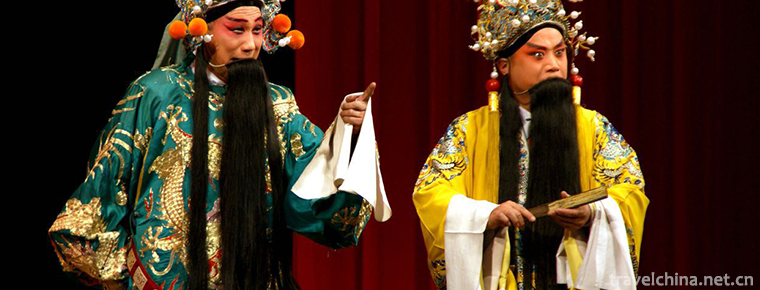
-
Chen Clan Ancestral Hall
located on the seven road of Zhongshan, Guangzhou.
Views: 172 Time 2018-10-12 -
Cold Noodles with Sesame Sauce
Cold Noodles with Sesame Sauce are also called cold noodles.
Views: 134 Time 2018-10-12 -
Tiger Leaping Gorge
Tiger Leaping Gorge, known as "danger", is one of the deepest canyons in China.
Views: 245 Time 2018-10-17 -
Mianshan Scenic Area
Mianshan Scenic Spot is a national AAAAA class tourist attraction, a key scenic spot in Shanxi Province, the birthplace of Ching Ming Festival (Cold Food Festival),.
Views: 299 Time 2018-11-24 -
Tangjiahe Scenic Area
Tangjiahe Scenic Area is located in Qingchuan County, Guangyuan City, Sichuan Province. Subtropical monsoon climate. National AAAA-level tourist attractions. Established in 1978, it covers a total are.
Views: 253 Time 2019-02-13 -
Jingxing spent
Jinglonglahua, a traditional dance in Jinglongxian County, Hebei Province, is one of the national intangible cultural heritage..
Views: 347 Time 2019-05-08 -
Shangdang Bayin Club
Shangdang Bayin Club is a kind of traditional folk wind and percussion music, which is widely spread in Changzhi and Jincheng in southeastern Shanxi Province..
Views: 94 Time 2019-06-13 -
Xiushan Folk Song
Xiushan folk song is the folk song of Xiushan Tujia and Miao Autonomous County. Folk songs are closely related to the people's lives of all ethnic groups in Xiushan. Through compiling folk songs, the .
Views: 120 Time 2019-07-08 -
Chinese history
Chinese history From China Chinese civilization To the present history. China has a long history. Since the Huangdi tribe Ji Xuanyuan (also known as the Gong sun Xuanyuan) period has been counted for .
Views: 197 Time 2019-08-28 -
Anhui Polytechnic University
Anhui Engineering University is a provincial multi-disciplinary higher education institution and a key construction institution in Anhui province. It is the first pilot institution of comprehensive re.
Views: 133 Time 2019-10-10 -
Miyaro scenic spot
Miyaro, translated as "fun Bazi", is a provincial scenic spot, located in the Zagunao River Valley of the upper reaches of Minjiang River in Lixian County, Aba Tibetan and Qiang Autonomous Prefecture.
Views: 106 Time 2020-11-07 -
Neijiang population
By the end of 2019, the total population of Neijiang's household registration was 4 million 81 thousand and 800, a decrease of 35 thousand and 900 from the end of last year, of which 2 million 103 thousand and 400 were male and 19 thousand were reduced.
Views: 347 Time 2020-12-16
